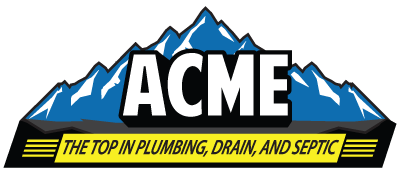The Importance of Regular Drain Cleaning: Preventive Maintenance for a Healthy Home
Maintaining a healthy home goes beyond surface cleanliness and aesthetic appeal; it extends to the essential systems that keep everything running smoothly. One often-overlooked aspect of home maintenance is routine drain cleaning. In this blog post, we'll explore why regular drain cleaning is crucial for preventive maintenance, preventing clogs, maintaining proper drainage, and avoiding potential plumbing issues.
Preventing Clogs: The Foundation of Healthy Drains
Clogs are a common and persistent issue in plumbing systems. They can occur slowly over time, with substances like hair, soap scum, grease, and food particles building up in pipes. Regular drain cleaning is the first line of defense against these accumulations.
By proactively removing debris through routine cleaning, you prevent the gradual buildup that leads to stubborn clogs. Clogs not only impede the flow of water but can also cause pressure imbalances in the plumbing system, potentially leading to leaks or burst pipes. Preventing clogs through regular cleaning is foundational to maintaining healthy drains and a well-functioning plumbing network.
Maintaining Proper Drainage: Efficiency and Effectiveness
Efficient drainage is fundamental to the functionality of sinks, showers, and toilets. Slow drainage is often an early sign of developing clogs, and it's a clear indicator that the plumbing system is not operating at its optimal capacity. Regular drain cleaning ensures that water can flow freely through pipes, preventing the gradual buildup that leads to sluggish drains.
Proper drainage is especially critical in areas prone to water usage, such as kitchens and bathrooms. In the kitchen, grease and food particles can accumulate, while bathrooms face challenges from hair, soap scum, and hygiene products. Regular cleaning addresses these specific issues, maintaining proper drainage and preventing inconvenience and potential water damage.
Avoiding Potential Plumbing Issues: A Proactive Approach
Neglecting drain maintenance can lead to more severe plumbing issues. Clogs, if left unaddressed, can escalate into pipe damage or even sewer line problems. This can result in costly repairs and disruptions to daily life. Regular drain cleaning serves as a proactive approach to plumbing maintenance, addressing minor issues before they escalate into major problems.
Moreover, clean drains contribute to the longevity of your plumbing system. When pipes are free from debris and water flows smoothly, there is less strain on the entire plumbing network. This reduces the risk of leaks, bursts, and other emergencies that can significantly impact your home and require plumbing service.
Professional Drain Cleaning vs. DIY: Striking the Right Balance
While some homeowners may attempt do-it-yourself drain cleaning methods, professional drain cleaning services offer a comprehensive and effective solution. Professionals use specialized equipment, such as drain snakes and hydro-jetting, to thoroughly clean pipes and remove stubborn blockages.
Professional drain cleaning not only addresses existing issues but also provides an opportunity for inspection. Plumbers can identify potential weaknesses in your plumbing system and offer recommendations for preventive measures. This expertise ensures that your entire plumbing system, including hidden pipes, is in optimal condition.
A Proactive Investment in Home Health
In conclusion, regular drain cleaning is a proactive investment in the health of your home. By preventing clogs, maintaining proper drainage, and avoiding potential plumbing issues, you contribute to the overall well-being of your living space. Whether you choose DIY methods or opt for professional services, incorporating routine drain cleaning into your home maintenance schedule is a simple yet effective way to ensure a healthy and smoothly functioning plumbing system. A proactive approach to plumbing maintenance leads to a healthier home, fewer disruptions, and potentially significant cost savings in the long run.
